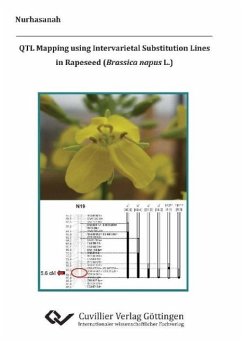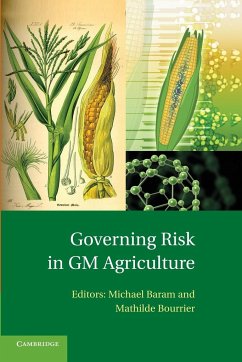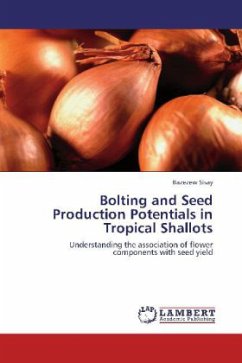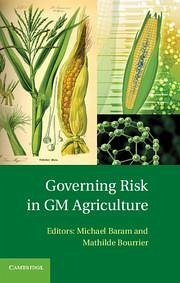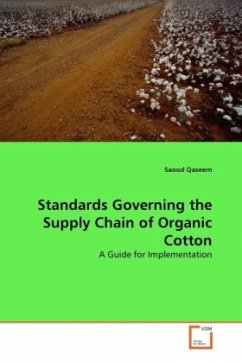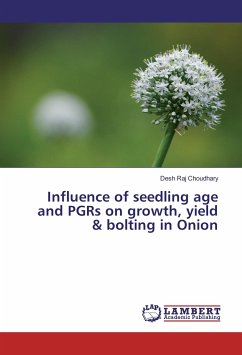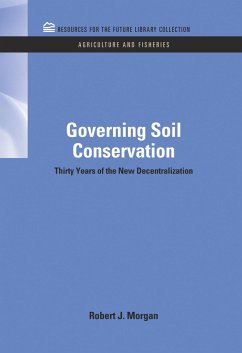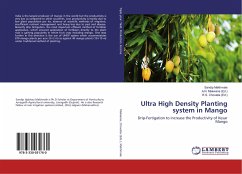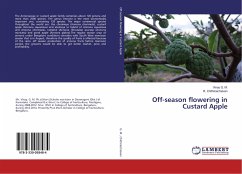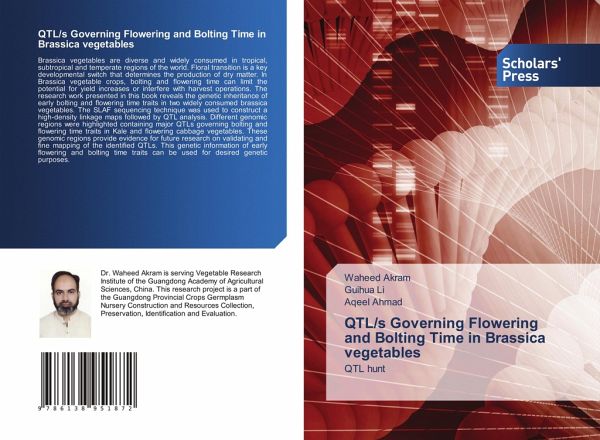
QTL/s Governing Flowering and Bolting Time in Brassica vegetables
QTL hunt
Versandkostenfrei!
Versandfertig in 6-10 Tagen
30,99 €
inkl. MwSt.

PAYBACK Punkte
15 °P sammeln!
Brassica vegetables are diverse and widely consumed in tropical, subtropical and temperate regions of the world. Floral transition is a key developmental switch that determines the production of dry matter. In Brassica vegetable crops, bolting and flowering time can limit the potential for yield increases or interfere with harvest operations. The research work presented in this book reveals the genetic inheritance of early bolting and flowering time traits in two widely consumed brassica vegetables. The SLAF sequencing technique was used to construct a high-density linkage maps followed by QTL...
Brassica vegetables are diverse and widely consumed in tropical, subtropical and temperate regions of the world. Floral transition is a key developmental switch that determines the production of dry matter. In Brassica vegetable crops, bolting and flowering time can limit the potential for yield increases or interfere with harvest operations. The research work presented in this book reveals the genetic inheritance of early bolting and flowering time traits in two widely consumed brassica vegetables. The SLAF sequencing technique was used to construct a high-density linkage maps followed by QTL analysis. Different genomic regions were highlighted containing major QTLs governing bolting and flowering time traits in Kale and flowering cabbage vegetables. These genomic regions provide evidence for future research on validating and fine mapping of the identified QTLs. This genetic information of early flowering and bolting time traits can be used for desired genetic purposes.



